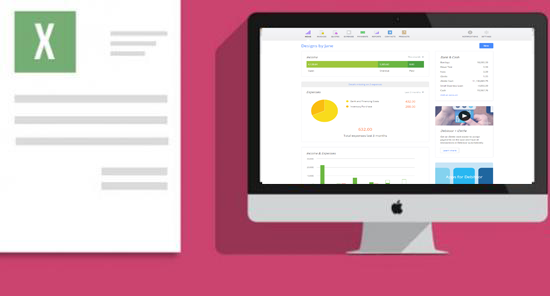Have we talked about creating invoices using Word? While this is the first solution many entrepreneurs just starting up will turn to, it’s arguably one of the more frustrating, less up-to-date methods for creating an invoice.
Excel takes it up half a step by offering a more structured, it is after all, a highly complex programme with an almost endless number of applications. And Excel does offer invoice templates as part of the software.

But these invoice templates have their problems. Namely, that it isn’t possible for them to be updated regularly to comply with the latest legal and tax regulations.
While Word and Excel can be useful when first starting out, and for purposes other than invoicing, you don’t just want your business to work, you want it to thrive. This requires a more efficient and professional way to manage your invoices. Online invoicing software.
So why not continue with Excel templates?
If the above explanation doesn’t convince you to step away from the comfort of Excel invoice templates, we hope the following will take care of that:
Invoice numbering. The numbering! While it may seem like a small detail to put such emphasis on, it a very important part of your invoicing. Each invoice should have it’s own unique number. In Excel, you have to remember the next number in the sequence and take care to remember to update it each and every time.
- Online invoice software takes care of that for you. With Debitoor, each new invoice is given the next number in your invoicing sequence automatically.
VAT VAT VAT. Again, a small detail. But keep in mind that with Excel, you will need to update the VAT yourself, if there are any changes. This means you need to commit to doing the necessary work to keep up with the latest developments. And who has time for that?
Standard invoice templates. In Excel in particular, the opportunities for designing and customising your invoice are quite limited (to put it lightly).
Professionalism. A custom invoice with a personal touch will put you in a much better light with your customers than a basic, standard invoice that can easily be overlooked. After all, an invoice is another opportunity to promote your brand.
Complexity. Using Excel to create your invoices is like trying to kill flies with a cannon. Excel is a highly complex calculation programme that is designed for far more complicated purposes. Because of this, it is not focused on providing great invoice templates.
Lack of an organisation system. Sure, you number your invoices and save them all in the same folder. But managing invoices is more than just creating them and sending them to your customer. It’s keeping track, following up, entering payments, and more.
And Excel can’t do that.
If you still need convincing, give Debitoor invoicing software a try and see just how easy it can be to create and send professional-looking invoices in moments. Then come talk to us.
